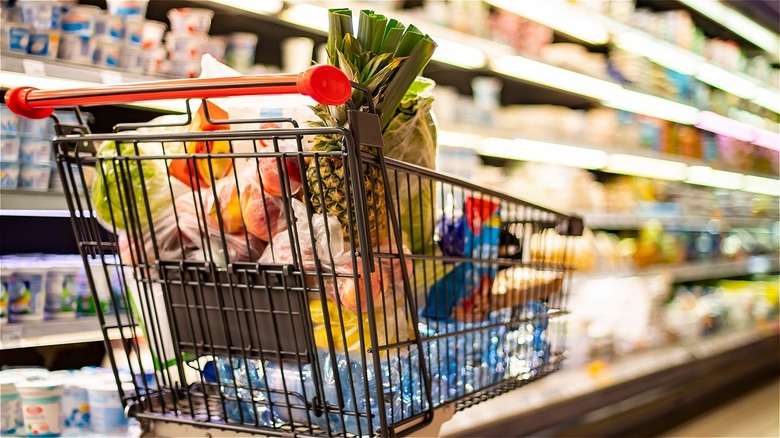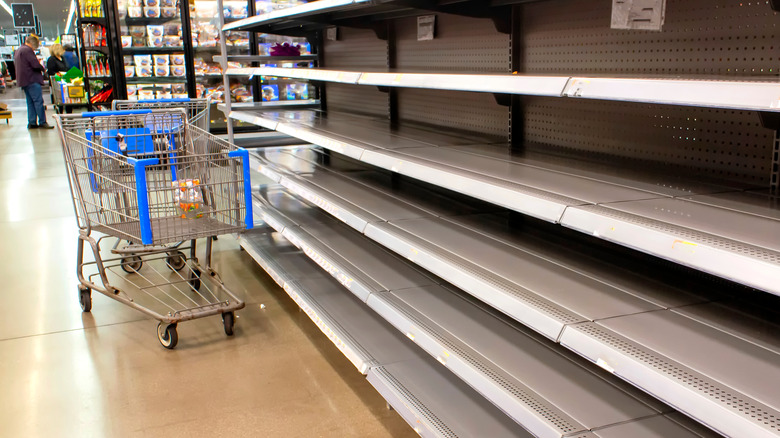Panic Buying Is A Food Shortage No-No
Sometimes world events can impact the availability of food at the grocery store. Between the COVID-19 pandemic, the Ukraine grain crisis, and the poultry industry's bird flu outbreak, countless grocery items are still difficult — if not impossible — to find. Naturally, this kind of uncertainty can prompt some people to stock up on what they deem essentials.
Think back to early 2020, when people were hoarding bizarre things like ketchup, baked beans, and yeast. Oh, and don't even get us started on toilet paper and disinfectant. Super annoying, yes, but also completely understandable given the circumstances.
According to London's Middlesex University, this so-called "panic buying" is merely the primal urge to "[hoard] food in the face of danger." In other words, hoarding supplies helps us feel more in control of a scary situation. That being said, panic buying causes a whole new set of problems, and might even be worse than the initial shortage.
Hoarding grocery items has a dangerous domino effect
Although you may be surprised to hear that panic buying can be dangerous, it's true. As explained by Future Learn, when certain items are stockpiled, other people start stockpiling them as well. Fortune reports that the media may not help matters: Some headlines could insinuate that there isn't enough food to feed everyone, which is typically not the case. Often, distributors just aren't able to move the food around so it's accessible to everyone.
So, what should we do in the face of the food shortages that could drag on for years? One option is to buy items in bulk at bulk goods stores like Costco or Sam's Club. These kinds of stores are prepared for you to buy a dozen cans of beans, and even encourage it. Another great strategy, according to the Seasonal Homestead, is to buy two of each nonperishable item you need. This allows you to use one, and save the other for a day down the road when there might be a shortage, all without causing panic in other shoppers.

